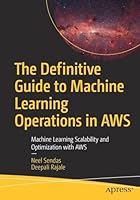
Identifying and Managing Project Risk, 3rd Edition
- Length: 400 pages
- Edition: 3
- Language: English
- Publisher: AMACOM
- Publication Date: 2015-03-25
- ISBN-10: 0814436080
- ISBN-13: 9780814436080
- Sales Rank: #65317 (See Top 100 Books)
Identifying and Managing Project Risk: Essential Tools for Failure-Proofing Your Project
Projects – especially complex ones – are inherently risky. Between time constraints, technical challenges, and resource issues, things can easily go wrong – making the identification of potential risks an essential component of every project manager’s job. Fully updated and consistent with the Risk Management Professional (RMP) certification and the Guide to the Project Management Body of Knowledge (PMBOK), Identifying and Managing Project Risk remains the definitive resource for project managers seeking to guard against failure. Drawing on real-world situations and hundreds of examples, the book outlines the risk management process and provides proven methods for project risk planning. Readers will learn how to use high-level risk assessment tools, implement a system for monitoring and controlling projects, and properly document every consideration. Analyzing aspects such as project scope, available resources, and scheduling, the third edition also offers fresh guidance on program risk management, qualitative and quantitative risk analysis, simulation and modeling, and significant “non-project” risks. This practical book will help readers eliminate surprises and keep projects on track.
Table of Contents
Chapter 1: Why Project Risk Management?
Chapter 2: Planning for Risk Management
Chapter 3: Identifying Project Scope Risk
Chapter 4: Identifying Project Schedule Risk
Chapter 5: Identifying Project Resource Risk
Chapter 6: Managing Project Constraints and Documenting Risks
Chapter 7: Quantifying and Analyzing Activity Risks
Chapter 8: Managing Activity Risks
Chapter 9: Quantifying and Analyzing Project Risk
Chapter 10: Managing Project Risk
Chapter 11: Monitoring and Controlling Risky Projects
Chapter 12: Closing Projects
Chapter 13: Program, Portfolio, and Enterprise Risk Management
Chapter 14: Conclusion
Appendix: Selected Detail from the PERIL Database

Zen and the Art of Digital Transformation: Leading a Mindful Redesign of the Digital Enterprise






